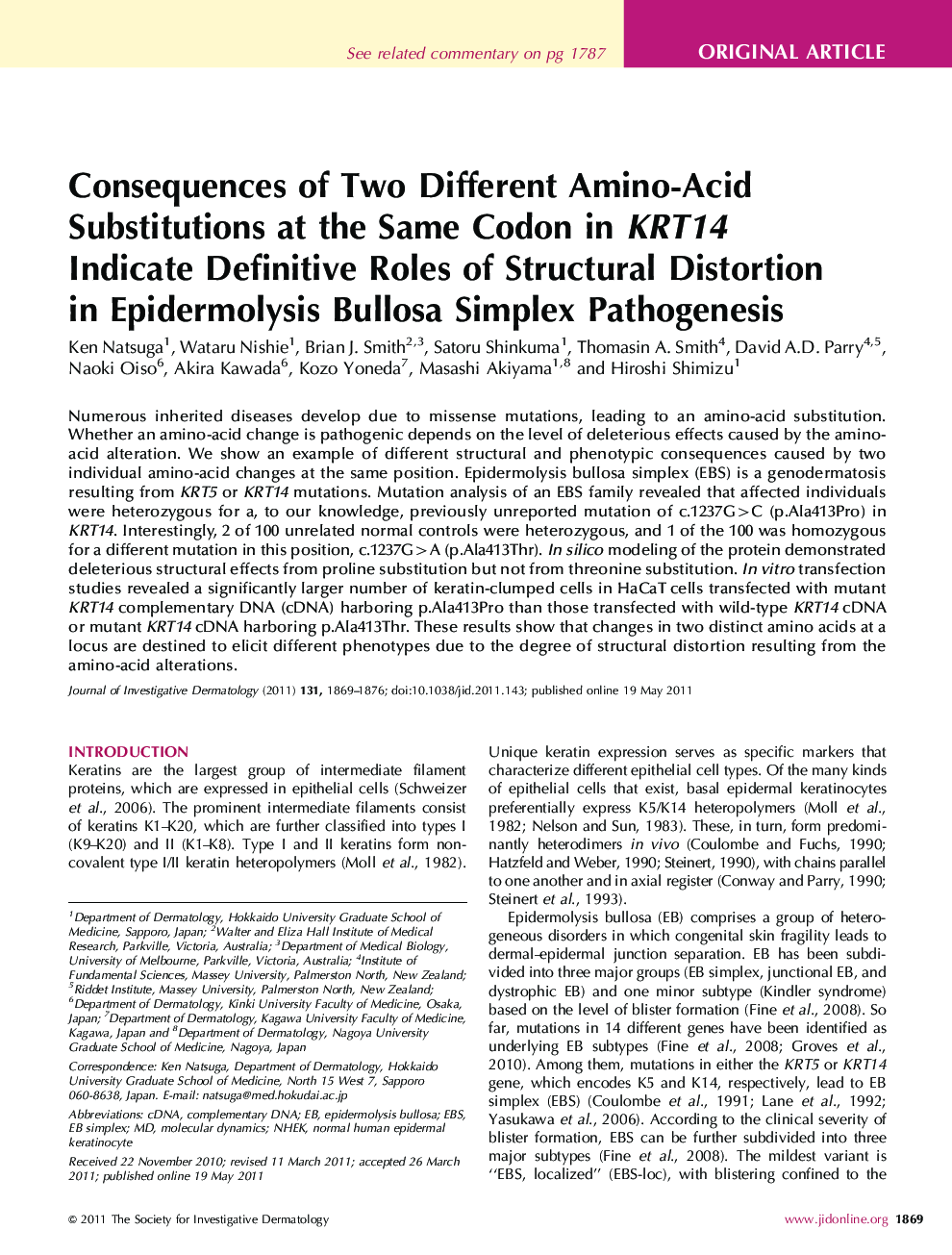| کد مقاله | کد نشریه | سال انتشار | مقاله انگلیسی | نسخه تمام متن |
|---|---|---|---|---|
| 6078206 | 1203562 | 2011 | 8 صفحه PDF | دانلود رایگان |

Numerous inherited diseases develop due to missense mutations, leading to an amino-acid substitution. Whether an amino-acid change is pathogenic depends on the level of deleterious effects caused by the amino-acid alteration. We show an example of different structural and phenotypic consequences caused by two individual amino-acid changes at the same position. Epidermolysis bullosa simplex (EBS) is a genodermatosis resulting from KRT5 or KRT14 mutations. Mutation analysis of an EBS family revealed that affected individuals were heterozygous for a, to our knowledge, previously unreported mutation of c.1237G>C (p.Ala413Pro) in KRT14. Interestingly, 2 of 100 unrelated normal controls were heterozygous, and 1 of the 100 was homozygous for a different mutation in this position, c.1237G>A (p.Ala413Thr). In silico modeling of the protein demonstrated deleterious structural effects from proline substitution but not from threonine substitution. In vitro transfection studies revealed a significantly larger number of keratin-clumped cells in HaCaT cells transfected with mutant KRT14 complementary DNA (cDNA) harboring p.Ala413Pro than those transfected with wild-type KRT14 cDNA or mutant KRT14 cDNA harboring p.Ala413Thr. These results show that changes in two distinct amino acids at a locus are destined to elicit different phenotypes due to the degree of structural distortion resulting from the amino-acid alterations.
Journal: Journal of Investigative Dermatology - Volume 131, Issue 9, September 2011, Pages 1869-1876